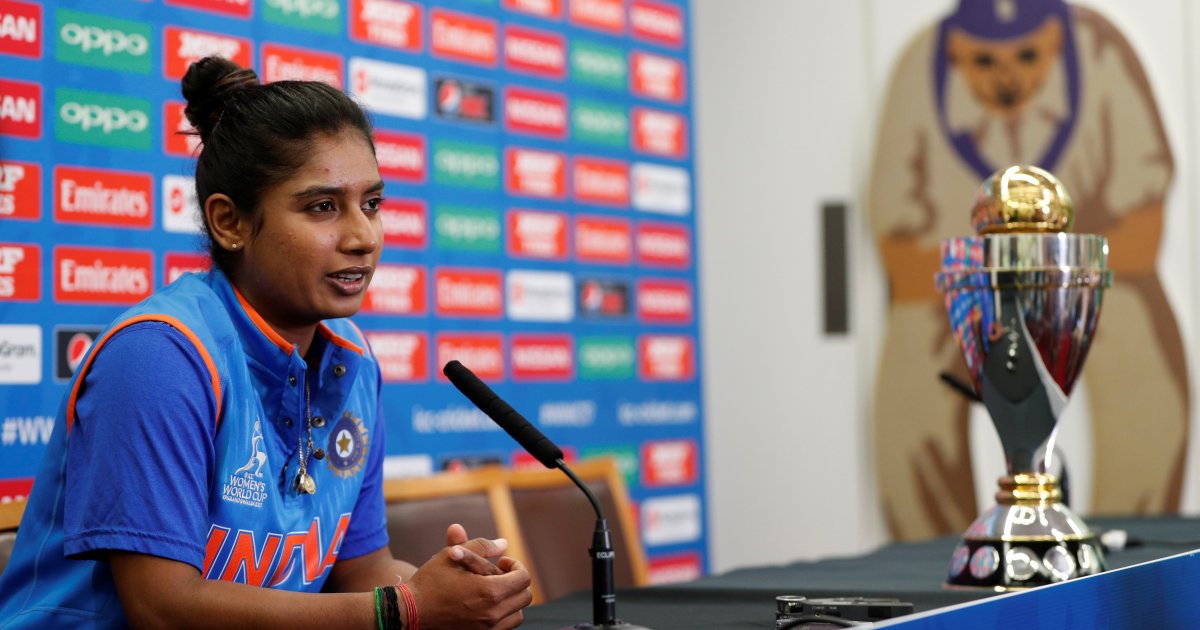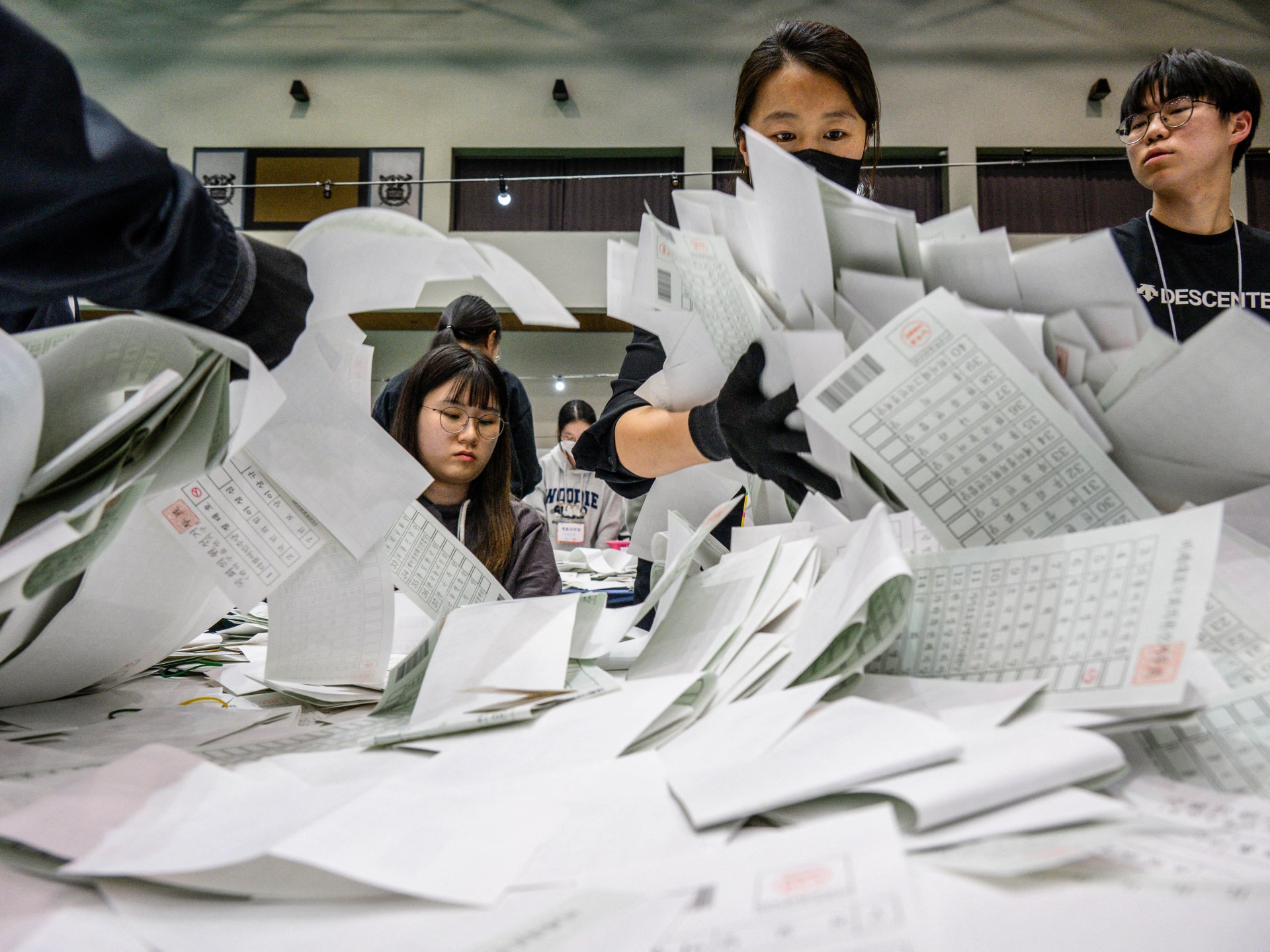A tribute to Mithali Raj, India’s cricketing genius
Even before most casual cricket followers got a glimpse of the batting genius that is the bedrock of her stature as an all-time great, Mithali Raj left her imprint on what would turn out to be a breakout 2017 One-Day International (ODI) World Cup campaign for India.
At a press event on the eve of the tournament, Raj was asked who her favourite men’s cricketer was.
The then-captain shot back with a matter-of-fact response that became the focal point of a new media interest around the women’s national team: “Do you ask the same question to a male cricketer?”
The next day Raj, during India’s winning start to the campaign, became the first woman to score seven consecutive ODI half-centuries. The image of her calmly reading The Essential Rumi before going in to bat achieved instant social-media virality.
#MithaliRaj – Queen of 🆒#WWC17 pic.twitter.com/F8GvP5oZJa
— ICC Cricket World Cup (@cricketworldcup) June 24, 2017
Raj announced her retirement from international cricket on Wednesday after an illustrious career spanning nearly 23 years during which scarce were the instances when neither Raj’s batting nor captaincy was at the forefront of why she made headlines.
But for the trailblazer of an athlete who broke records and stereotypes with aplomb, these two episodes remain a window into the person behind the player, especially the self-aware, reclusive – though oft-fun-loving and forthright – individual who strove to create an identity as a cricketer when the country she represented remained oblivious to her, and the women’s game, for the majority of her career.
“I set out as a little girl on the journey to wear the India blues as representing your country is the highest honour,” Raj, 39, wrote on social media while announcing her retirement.
“The journey was full of highs and some lows. Each event taught me something unique and the last 23 years have been the most fulfilling, challenging and enjoyable years of my life.”
Thank you for all your love & support over the years!
I look forward to my 2nd innings with your blessing and support. pic.twitter.com/OkPUICcU4u— Mithali Raj (@M_Raj03) June 8, 2022
In 1999, when a 16-year-old Raj announced herself on the international stage with an unbeaten 114 on her ODI debut in England, women’s cricket in India, administered by a cash-strapped Women’s Cricket Association of India (WCAI) at the time, was far from a viable career option.
But in choosing to serve the country with excellence as an active practitioner of the sport until as recently as March, Raj empowered young girls in India with to dream to excel as professional cricketers.
“Cricket is a dream and when I started off my career I had no idea that women’s cricket existed but the only name ever told or heard was yours @M_Raj03 Di,” wrote Harmanpreet Kaur, who succeeded Raj as captain, on Wednesday.
“You sewed [sic] the seed for all the young girls to take up this sport and dream big.”
In hindsight, for a batter conditioned from a young age by her father, Dorai Raj, to finish any innings unbeaten, no matter her final score, few would have been better prepared for the long haul than Raj.
That wisdom, to some extent, also defined Raj’s batting philosophy: dig her heels in and do the bulk of the scoring, more so given the dependability she craved for from the rest of the Indian lineup long eluded her.
It also explains her superlative ODI batting average of 50.68, second only to Australia captain Meg Lanning’s 53.13.
Raj, a trained Bharatnatyam dancer, was “forced” into cricket, as she often puts it herself, at the age of eight. To remedy her penchant for sleeping in till late, her father would drag her to his older son’s cricket training at St John’s Academy in Secunderabad.
However, under the tutelage of coaches who spotted her potential early, it took her little time to find her feet in domestic cricket. At 13, she was drafted into the Andhra Pradesh state team, and after her sensational international debut – a then-world-record 598-minute Test knock of 214 against Ireland in 2002 – established her as the linchpin of India’s batting.
Despite the emergence of many promising names over her career, Raj, who retired from Twenty20 Internationals (T20Is) in 2019, remained the most dependable batter on an Indian team sheet until her swansong.
In that game, the last group-stage fixture of the 2022 ODI World Cup that ended in South Africa knocking India out of the tournament, Raj scored 68, her 64th half-century in a format she closed out with a record 7,805 runs.
Congratulations on a stellar career Mithali Raj!
Your contribution to Indian Women’s Cricket over the last 23 years has been immense and you have been an inspiration to young girls wanting to play for India.
Wishing you the very best for all your future endeavours. pic.twitter.com/QgioNIONWX
— Sachin Tendulkar (@sachin_rt) June 9, 2022
The numbers, in their variety and abundance, speak of her prolificity and longevity. Her 10,868 runs, including 93 50-plus scores, over 333 international appearances, are world records for a woman cricketer.
The length of her ODI career – 22 years and 274 days – is the longest for anyone across the sport – men’s or women’s. Her 155 ODIs as India’s captain are the most by any woman and so is her appearances in six ODI World Cups.
Among Indians, she was the only captain – male or female – to lead India to two World Cup finals.
One of those was in 2005, in South Africa. Despite carrying a ligament injury in the right knee, Raj, then a newly designated captain, scored an unbeaten 91 in the semi-final.
India lost the final to Australia but Raj’s impact was clear.
“Remember watching @mithaliraj bat at SuperSport Park during the 2005 World Cup Final as a 11/12 year old next to the boundary,” wrote South Africa captain Dané van Niekerk on Instagram following Raj’s retirement. “… Thank you for inspiring not just me, but millions of people!”
Under Raj’s captaincy, India came close to winning their maiden world title for a second time in the 2017 ODI World Cup.
She kicked off India’s campaign with a patient 71 that helped stun hosts England, struck a crucial century in the virtual quarter-final against New Zealand, and finished as their highest run-getter in the tournament.
India fell nine short in the final but the team’s spirited run to the final, amplified by the World Cup’s record broadcast and digital reach, generated a groundswell of interest at home around the women’s game. Cash rewards and a pay hike from the Board of Control for Cricket in India (BCCI), which took over the women’s game in 2006, followed.
Many of the players shot to stratospheric prominence overnight. Well-read, articulate and able to hold her own under the spotlight, Raj, in specific, became a magnet for endorsement deals. Her social media following, currently almost seven million-strong, boomed from just a few thousand.
Publishers and producers queued up for the rights to her biography and biopic.
Transitioning into a brand herself, she graced everything from billboards to the cover of Vogue, at times even alongside the who’s who of business and Bollywood. The name that had long been most synonymous with women’s cricket in India suddenly became its most sought-after face, too.
Mithali Raj reflects on her glorious cricketing journey and the struggles behind it 📽️ pic.twitter.com/NwW3q5bukE
— ICC (@ICC) June 8, 2022
As with her friend and longtime teammate Jhulan Goswami, the other stalwart who has carried the Indian side on her shoulder in this millennium, the 2017 ODI World Cup brought Raj a semblance of wider public recognition that had been long overdue.
But the inflexion point the campaign promised to be for women’s cricket in India did not eventually prove so. In part because of the administrative apathy of the BCCI, the richest cricket board in the world.
The still-non-existent Women’s Indian Premier League (WIPL) is a classic case of stasis that has beset governance of women’s cricket in India throughout Raj’s career.
Despite successful proofs of concept in women’s domestic leagues run by English and Australian cricket boards, the BCCI is yet to start a WIPL. And now, with Raj’s retirement from international cricket and the impending one of Goswami, the much-deserved participation of the duo as players is no longer a certainty.
“I think the way things have gone, it wasn’t an easy journey,” Raj, reflecting on her storied career, said after a match-winning unbeaten 75 in the third ODI in Worcester last year.
“It had its trials and challenges. I’ve always believed that these trials always have a purpose, and there were times when I wanted to give up for various reasons but something kept me going.”
The records she etched, the boundaries she pushed, the cover drive that epitomised her technical exactitude, and the floppy hat that became a signature sartorial statement – Raj will be remembered for many reasons.
The foremost among them, though, would be her decision to not turn her back on a sport which, like the country she played for, remained indifferent to her for the best part of her career.




